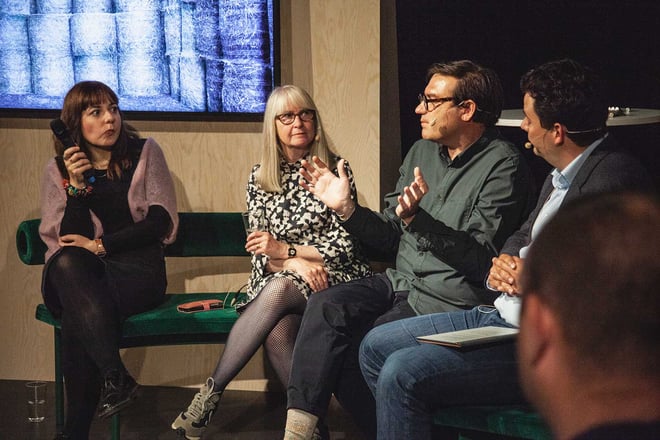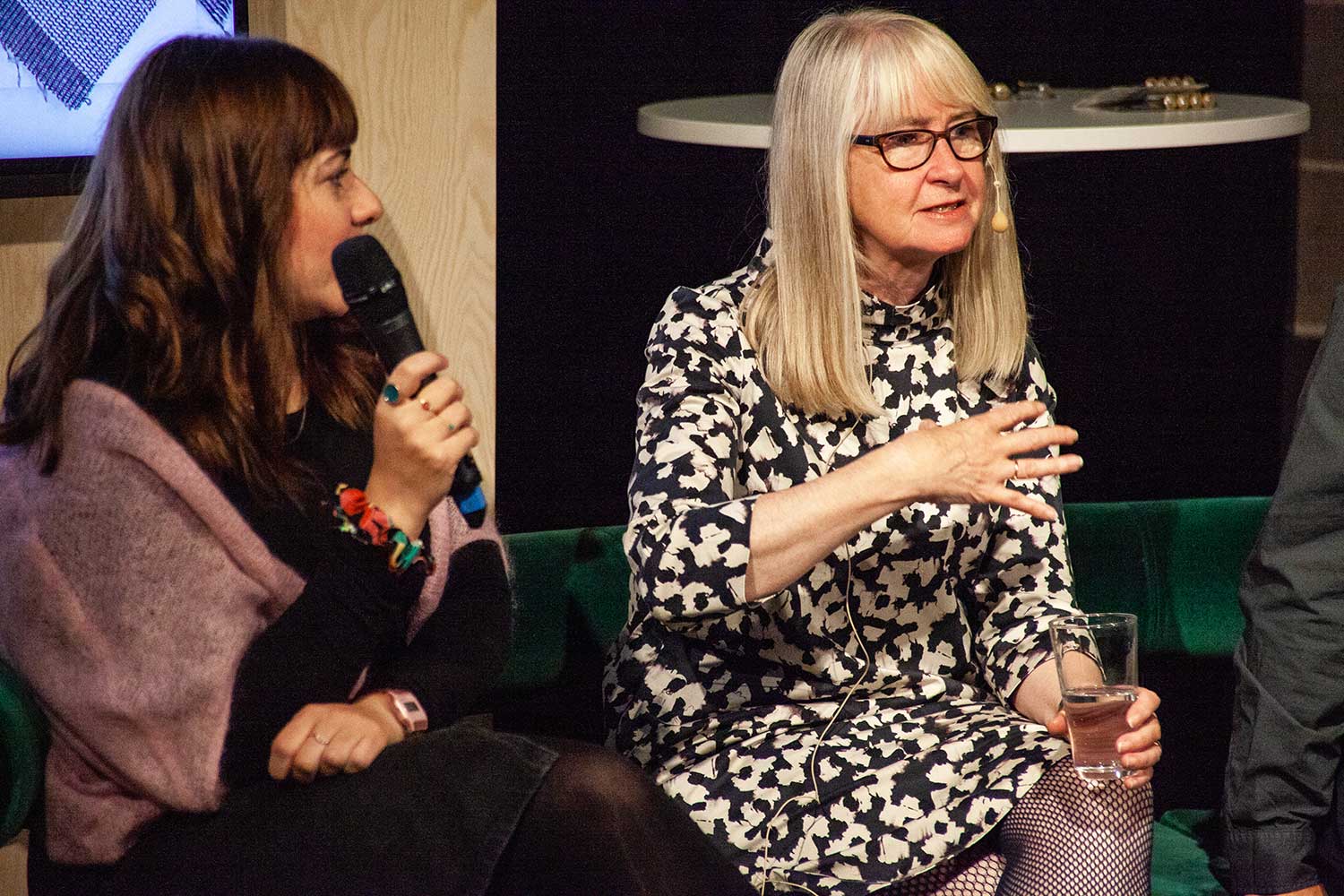At Stockholm Design Week, we invited four experts from two of the leading textile manufacturers Camira Fabrics and Gabriel, to uncover the challenges they face to make sustainable fabrics and what can be done to achieve net-zero carbon emission targets when it comes to designing and consuming textile products.
In this article we look at two fibres championed as sustainable choices, and what other issues the textile industry must navigate to go green.
Wool
“For many, wool is THE most sustainable fibre,” says Lynn Kingdon, Head of Creative Design at Camira Fabrics, continuing; “For a start, in comparison to other popular materials, wool has a low carbon footprint thanks to its organic nature. For me, it is the most beautiful and intelligent fibre. It has stretch, crimp and takes colour beautifully – it goes right deep into the fibre. It has a naturally long life, it stays clean.”
These qualities make it a durable and lasting fabric, meaning less wear and less frequent reupholstery. When compared to cotton, it is also far more resistant to staining. Added to this is its soft and pleasant touch.
Environmentally, because it is a natural product it also biodegrades naturally, meaning less waste in landfill. In both the home and the workspace it can have a positive impact on air quality as explained by Paraskevi Fotoglou, Sustainability Engineer at Camira Fabrics; “Wool also is able to capture volatile organic compounds or VOCs that are present in a room, effectively working to purify the air”.
Wool can also be blended with other fibres to create other useful properties, as Lynn continues; “We blend it at Camira with other plant fibre such as hemp, flax, silk and we have a long history with doing so. We worked with a university developing nettle wool blend, and partly accidently, we discovered that by blending nettles with wool at the right percentage you can get incredibly high flame retardency without any chemicals or pesticides gets to crib 5.”
These points put forward a compelling argument, but what are the drawbacks?
For one, it is considerably more expensive than other options such as cotton, or polyester. Its cosiness is not always appreciated in warmer temperatures, whilst certain areas such as eating establishments or clean rooms may require more easily cleaned or sanitised textile surfaces.
To meet even tougher usage requirements, wool is often blended with polyamides such as nylon. These blended fabrics offer high strength and abrasion resistance. However, as a plastic, these polyamides are derived from a non-renewable source (oil), and they also make it harder to separate and recycle at end of use.



